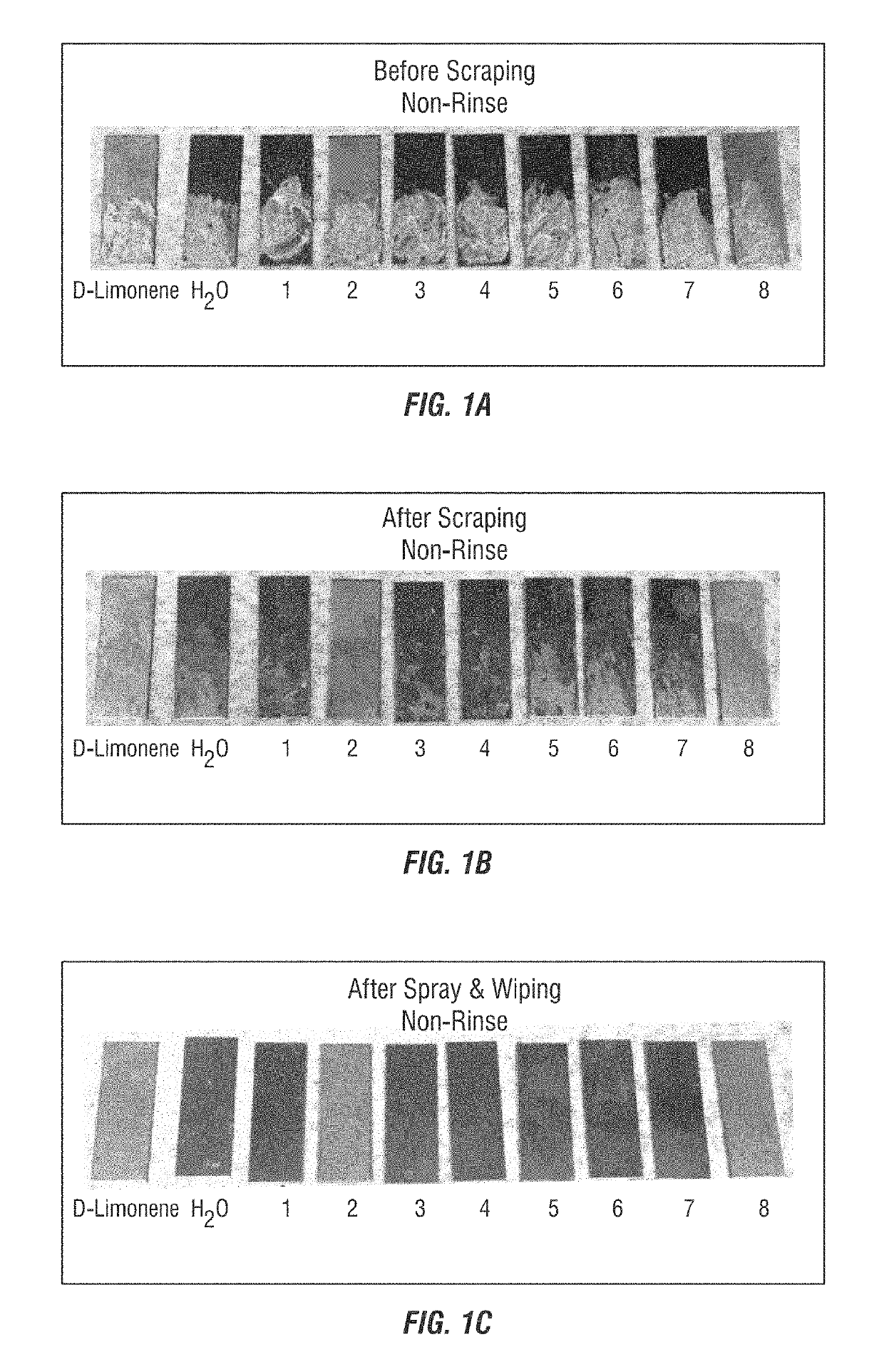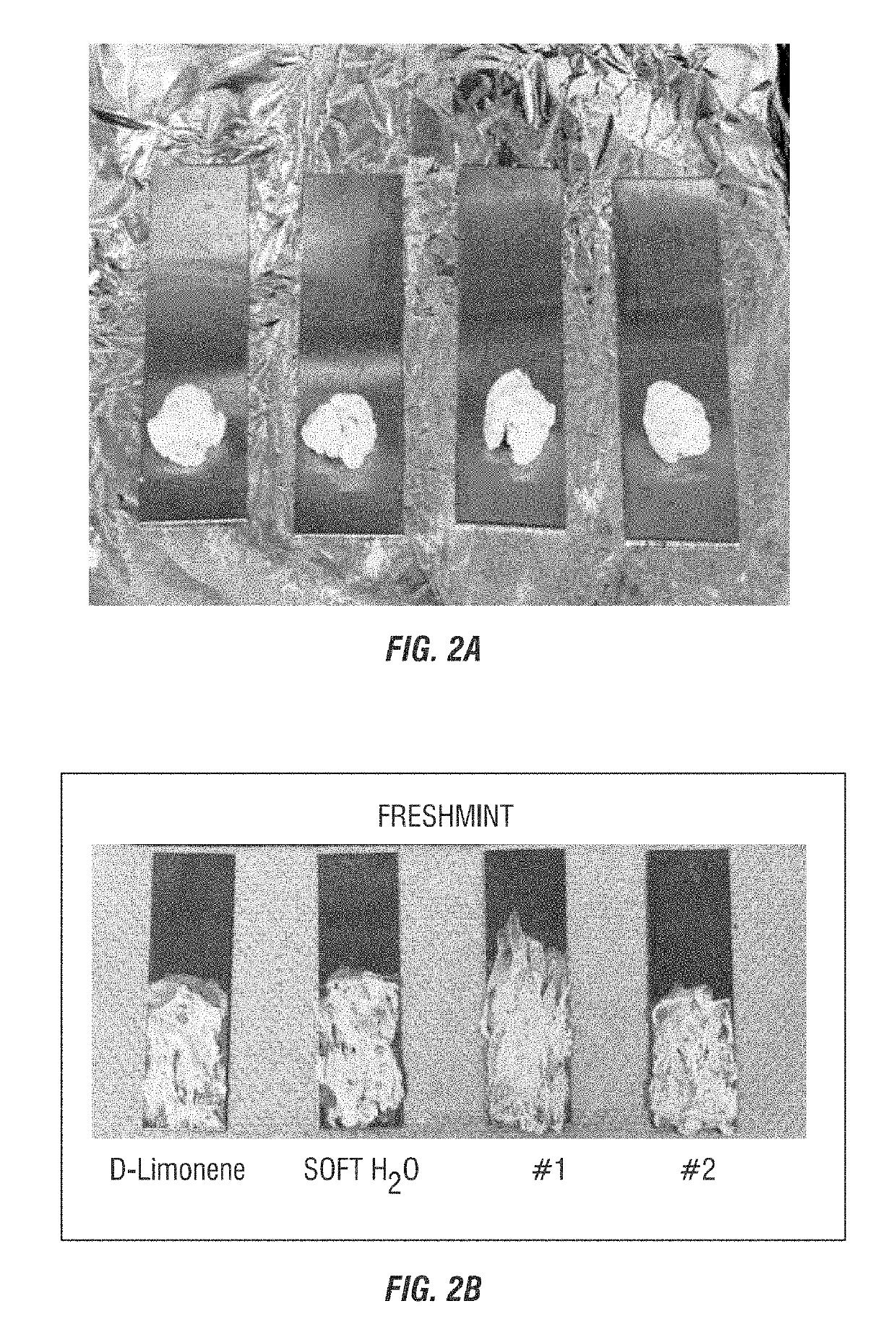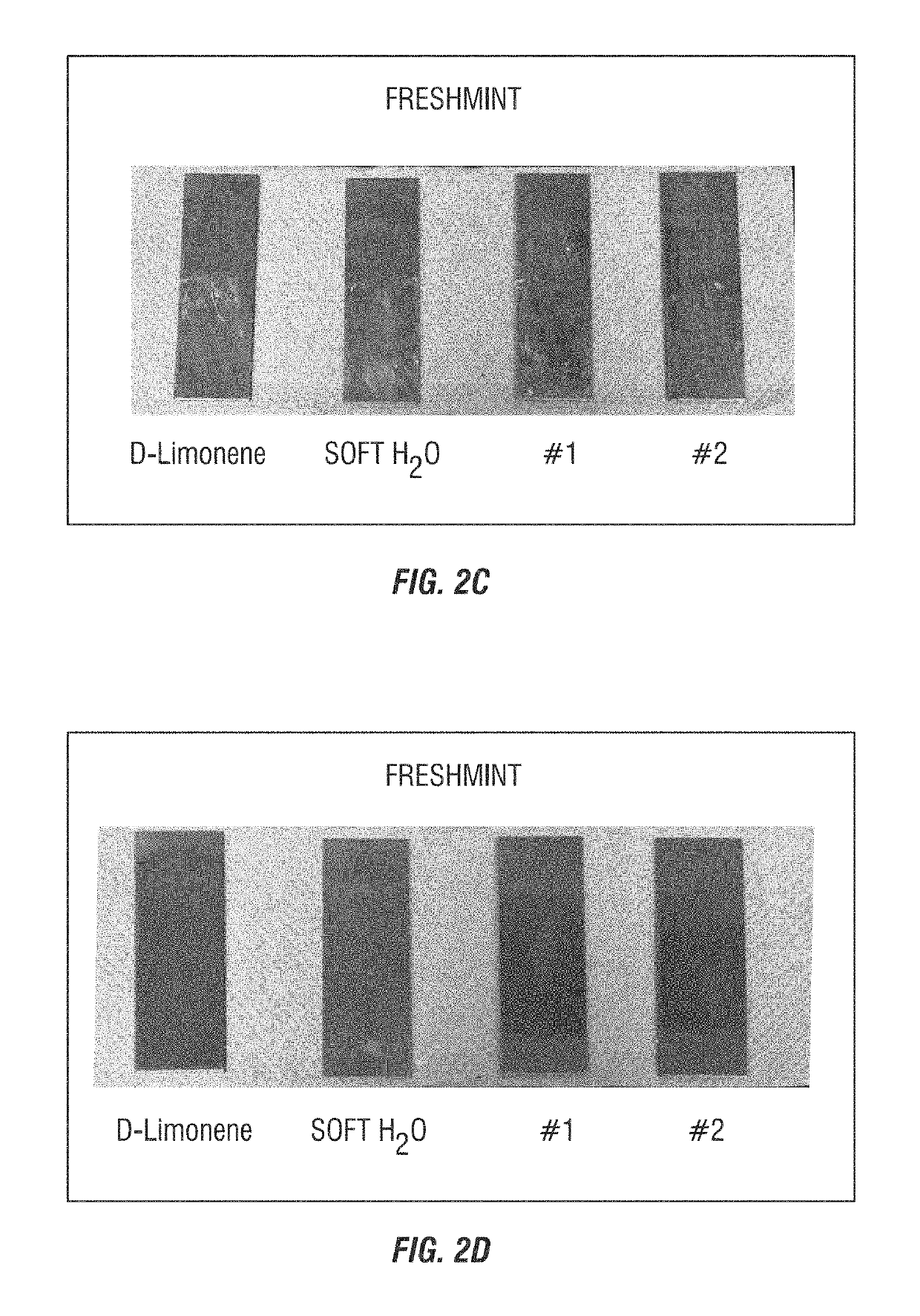Methods and cleaning solutions for removing chewing gum and other sticky food substances
a technology of chewing gum and food substances, applied in the field of cleaning compositions and methods, can solve the problems of limiting the applicability of d-limonene to more widespread use, lack of physical properties, and inability to be easily watered down, and achieve the effect of effectively removing chewing gum, its components and other sticky soils from surfaces, and effectively removing chewing gum, its components and other sticky soils
- Summary
- Abstract
- Description
- Claims
- Application Information
AI Technical Summary
Benefits of technology
Problems solved by technology
Method used
Image
Examples
example 1
[0178]A scrape-spray-wipe procedure was utilized to validate the cleaning ability of the formulations as provided below in Examples 1-5 of Table 2; Examples 6-10 of Table 3; and Examples 11-15 of Table 4. The numerous formulations were tested using either a scrape-spray-wipe or static soak methods to remove the various chewing gum products.
[0179]In the evaluation, 1-inch by 3-inch stainless steel (SS) cleaning validation coupons were warmed on a hotplate. Once warm, gum of various types and flavors was added to the coupons and allowed to soften. The coupons with gum were allowed to cool to room temperature, then the gum was removed from each coupon with a spatula. Two controls were used; one coupon was sprayed with water, and another coupon was sprayed with D-Limonene (positive control). Each of the remaining coupons were sprayed with the formulation of the given Example, then wiped with a paper towel.
[0180]
TABLE 2Example 1Example 2Example 3Example 4Example 5MaterialWt., gWt. %Wt., ...
example 2
[0190]Following the unexpected benefit of the no soak, no rinse gum removal obtained by the Example 1 formulation as shown in Example 1, additional modifications to the formulation were evaluated. The same static soak methods to remove gum set forth in Example 1 above were evaluated for Example 16 of Table 5.
[0191]
TABLE 5Example 11MaterialWt., gWt. %Water Zeolite Softened TNK1.0310.25Glycerine, 96%4.9248.96Propylene Glycol, USP1.5515.42Ethyl Lactate2.5525.37
[0192]FIGS. 7A-C show the reduced water formulation gum removal experiments to evaluate the effect on formula performance when the quantity of water is decreased. The testing was conducted with a reduced-water formula of Example 11 on five flavored gums (mint, villa, grape, mora, and zombie). FIG. 7A shows the coupons with the five flavored gums before scraping. FIG. 7B shows the coupons after scraping and still containing gum residue. FIG. 7C shows the coupons with some residue remaining after spray of the experimental formula a...
example 3
[0193]Additional evaluations were conducted for the no soak, no rinse gum removal cleaning compositions employing the methods of and formulation Example 1.
[0194]FIGS. 8A-C shows additional gum removal experiments evaluating the Example 1 formulation on the cinnamon flavored gum. FIG. 8A shows the gum on the coupons before scraping, FIG. 8B shows the coupons with gum after scraping, and FIG. 8C shows the coupons after spray of the experimental formula / controls and wiping. The evaluated formula shown as Example 1 demonstrated gum removal superior to controls.
PUM
| Property | Measurement | Unit |
|---|---|---|
| temperature | aaaaa | aaaaa |
| temperature | aaaaa | aaaaa |
| temperature | aaaaa | aaaaa |
Abstract
Description
Claims
Application Information
 Login to View More
Login to View More - R&D
- Intellectual Property
- Life Sciences
- Materials
- Tech Scout
- Unparalleled Data Quality
- Higher Quality Content
- 60% Fewer Hallucinations
Browse by: Latest US Patents, China's latest patents, Technical Efficacy Thesaurus, Application Domain, Technology Topic, Popular Technical Reports.
© 2025 PatSnap. All rights reserved.Legal|Privacy policy|Modern Slavery Act Transparency Statement|Sitemap|About US| Contact US: help@patsnap.com



